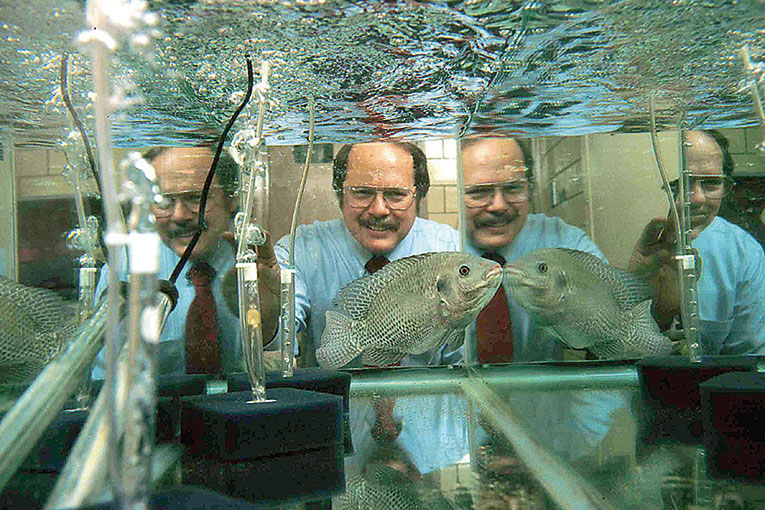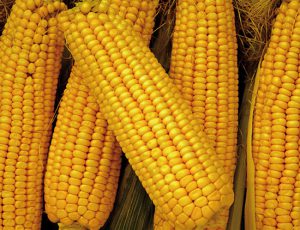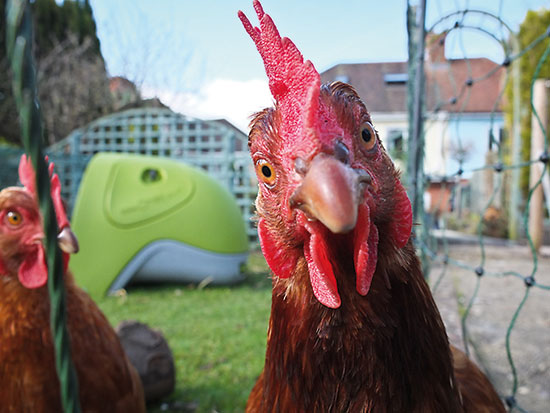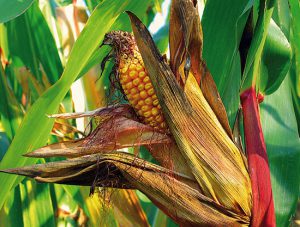Darwin and animal breeding
Evolution applied to breeding improvements

Darwin reflected on the potential of natural selection by comparing it with the results humans have achieved with artificial selection. This paper discusses how, although the similarity between the two is evident, there are also important differences. We also present two examples of applications of evolutionary theory: the potential importance of sexual selection in transgenic fish and selection for social characteristics in the context of welfare-friendly animal breeding.
Keywords: artificial selection, sexual selection, social character, animal welfare.
Natural selection and artificial selection
The differentiation of domestic species into varieties or races, with different productive capacities, due to the continued practice of artificial selection, made Darwin ponder the idea that a similar force – natural selection – could be behind the adaptation of living beings to their surroundings. In his own words: «I soon realized that selection was the keystone of man’s success [in the formation of the breeds of domestic animals and plants]. But how selection could be applied to organisms living in a state of nature remained for some time a mystery to me. In October (1838) […] being well prepared to appreciate the struggle for existence which everywhere goes on from long-continued observation of the habits of animals and plants, it at once struck me that under these circumstances favourable variations would tend to be preserved, and unfavourable ones to be destroyed. The result of this would be the formation of new species. Here then I had at last got a theory by which to work».
«In natural selection there is no breeder, just differentially reproducing individuals: some leave more offspring than others»
Although the similarity between both types for selection is visible, there are important differences. Artificial selection is guided by a breeder who imposes the desired criteria, be it the production of milk, fruit size, etc., and maintains it during successive generations. In natural selection there is no breeder, just differentially reproducing individuals: some leave more offspring than others. This depends on environmental circumstances that can change in each generation: temperature, pathogens, etc. The process has neither goal nor purpose. In Darwin’s words: «Man selects only for his own good: Nature only for that of the being which she tends». Generally breeders are more interested in predicting the outcomes obtained in the short and medium term, as a result of their decisions regarding selection and preservation. On the other hand evolutionary biologists are interested in explaining and interpreting the changes that have already occurred, some of which have a long history (López-Fanjul et al., 2009). However, the mechanisms in action are the same in both cases: changes in gene frequencies as a result of the action of directional selective forces (natural or artificial) and random processes (genetic drift).
The ignorance of heredity mechanisms meant that the explanatory power of Darwinian Theory quickly dwindled, and its validity wavered during the so-called «eclipse of Darwinism». In this time, breeding and improvement of economically interesting attributes suffered from the same lack of theory, and thus continued to base itself on empiricism which, in this case, produced better results. However, in the early twentieth century, technical advances were incorporated into breeding practices, resulting from the genetic knowledge of that time. These were aimed at obtaining lines with a high degree of consanguinity, the aim of which was to exploit the hybrid vigour manifested in the progeny of specific crosses. This procedure, limited in practice to plants, would not be currently recommended as an alternative to artificial selection, but has been maintained in some species, particularly maize, by conditions of the market.
«The relationship between breeding improvement and evolution has been so close that it is not possible to distinguish between advances in evolutionary theory that have contributed to advances in breeding and vice versa»
Authors R. A. Fisher and S. Wright developed mathematical models that constitute the common theoretical core of neo-Darwinism and genetic improvement. To the former author we owe the genetic description of quantitative characters, and theoretical predictions of selection response in large census populations. To the latter, the treatment of random genetic change and its influence on the outcome of selection when the population census is reduced. In both disciplines, a gathering of prior biological knowledge occurred around these models, which came to a head in the years following the end of World War II and finally led to the formulations currently in force. Since then, the exchange between the developments of both disciplines has been continuous. For example, the limits theory of artificial selection is based on stochastic models describing the change in gene frequencies by natural selection in populations of finite size. In the same way, the analysis of natural selective forces acting indirectly on a set of quantitative attributes is based on multivariate techniques used to predict the response of several traits subjected to simultaneous artificial selection.

In the late 1960s, more than 85% of the corn seeds planted in the U.S. were homozygous for a gene that suppresses the development of male flowers, which favours the production of hybrids. However, an unintended consequence of the presence of this factor was the increased susceptibility of plants to a strain of fungus, which caused billion dollar losses in 1970. / Marty Desilets/Chris Bartnik/sadece oguz
The relationship between breeding improvement and evolution has been so close that it is not possible to distinguish between the advances in evolutionary theory that have contributed to advances in breeding and vice versa (Toro and Castro, 2009). Sometimes, well-known principles of evolutionary genetics, for example, the need for genetic variability for the long-term success of a population, have been revealed in some agronomic experiences, often catastrophically. In the late 1960s, more than 85% of the corn seeds planted in the U.S. were homozygous for a gene that suppresses the development of male flowers, which favoured the production of hybrids. However, an unintended consequence of this was the increased susceptibility of plants to a strain of fungus, which caused billion dollar losses in 1970. To avoid the consequences of loss of variability, which accompany many breeding improvement strategies, the creation of germplasm banks was promoted. These preserve varieties and wild relatives of commercial strains, but resistant to diseases and able to withstand environmental stressors such as salinity and drought.
Natural selection and sexual selection
One of the forces that can lead to poor adaptation is sexual selection. This is a special case of natural selection. Sexual selection acts on the organism’s ability to have a successful mating partner. The fantastic colour of the peacock’s attractive tail led Darwin to believe that the exclusive presence of certain traits in males is not because they have survival value per se. If they did, it would be hard to imagine why females do not possess them. Rather, he came to think that the reason for these motifs lay in their attraction, and therefore they were features that facilitated mating. They are actually indicators of health state, which usually implies higher biological efficiency of the offspring. These ideas are relevant in a practical setting, as demonstrated by the well-known animal breeder of Purdue University in Indiana (USA), W. Muir, who together with R. Howard, conducted experiments with the transgenic Japanese medaka fish (Toro, 2011). They found that larger than average medaka males are four times more successful at mating and raising their young. Transgenic medaka males, which are even larger, are up to seven times more successful at mating. However, they also found that their offspring have a lower survival rate. Using these real values in a computer simulation model, they analysed what would happen if sixty transgenic medaka males were introduced into a natural population of 60,000 individuals. Wild females perceive the transgenic medaka male as a more attractive partner. But in this case, appearances are deceiving because, although transgenic males are bigger and better mates, their offspring die before the wild males’, even if the latter are smaller. In just forty generations, the entire species would be doomed to extinction. They coined the term «Trojan gene effect» to describe the fact that transgenic medaka males hide, behind an attractive appearance, the genes able to destroy an entire population.

The direct effect in hens’ cannibalistic pecking behaviour shows the ability of an animal to survive by avoiding being pecked, while the associated effects refer to the effect on survival of the same animal’s pecking behaviour towards other members of its cage. / Ian Southwell
Selection for social traits
The existence of altruistic behaviour poses a challenge to the neo-Darwinian interpretation of behaviour. One explanation, as proposed by Darwin, is selection between groups: «A tribe including many members who, from possessing in a high degree the spirit of patriotism, fidelity, obedience, courage, and sympathy, were always ready to aid one another, and to sacrifice themselves for the common good, would be victorious over most others tribes; and this would be natural selection».
We can safely say that today most evolutionary biologists doubt that this process can be effective and think that natural selection acts to favour some individuals over others, instead of one group over another. The preferred mechanism evolutionary biologists propose to explain the evolution of altruism is kin-selection. In a classic paper published in 1964, the young British biologist W. Hamilton said that if a particular gene induces a person to sacrifice his life in exchange for saving several relatives, the number of copies of that gene in subsequent generations could grow faster than if the sacrifice had not been made, since all the relatives are more likely to be carriers of the same genes as the individual who sacrifices himself. That is, altruistic behaviour poses a cost to the individual performing it, but it is a benefit for those who interact with him and, if these individuals are his close relatives, this behaviour will indirectly benefit the altruist.
«Sexual selection is a special case of natural selection, which acts on the organism’s ability to obtain a successful mating partner»
Hamilton established the relationship between the cost attributed to the author of altruistic behaviour (c) and the benefit to his receptors (b). This relationship is known as Hamilton’s rule and is indicated as follows: a trait will be favoured by natural selection if the product Rb is greater than c, where R is the proportion of genes shared by the author and the recipient (the coefficient of additive relationship in the jargon of breeders). The coefficient R is equal to 0.5 if they are siblings, if they are half-brothers 0.25 and 0.125 if they are cousins. In this context, it is said that in the 30s, J. B. S. Haldane, one of the founders of the neo-Darwinian synthesis, jested while drinking beer in a pub that he would not mind risking his life if he saved two brothers or eight cousins. The idea had already been formulated by the renowned animal breeder J. L. Lush in 1951: «The competition and selection among families thus introduced could make selection favour any genes which tend to cause their possessor to sacrifice himself for his deme, provided the sacrifice promotes the biological welfare of his relatives (some of whom will have some of the gene he has) enough to more than compensate for the genes lost in his own sacrifice».
«Selection of groups or by kin selection has been shown a successful method in the selection of less aggressive animals»
The same year as the publication of Hamilton’s article, and inspired by him, the Australian plant breeder B. Griffing provided a rigorous approach to the quantitative genetics of interactions between individuals, including the theory of selection response. He found that the phenotype of an individual can be broken down into a direct effect from the individual himself and an effect associated from the result of living in a group. For example, the direct effect in hens’ cannibalistic pecking behaviour is shown by the ability of an animal to survive by avoiding being pecked. The associated effects refer to the effect on survival of the same animal’s pecking behaviour towards other members of its cage. Griffing was able to derive the equations of the response to individual artificial selection, which can be negative, and the response to group selection and kin selection, which in the latter two cases is always positive. In essence it is the same mechanism that favours Hamilton’s altruistic behaviour through natural selection.
«The ignorance of heredity mechanisms caused the explanatory power of darwinian theory to quickly dwindle, and its validity wavered»
Evidence in support of Griffing’s theory was obtained experimentally during the seventies thanks to experiments with laboratory insects and domestic species (Wade et al., 2010). In the eighties it was again the breeder Muir who successfully practised group selection in laying hens, obtaining lineages with lower mortality. Also around that time, Moav and Wohlfarth observed a negative response to artificial selection for growth in carps, which they attributed to the indirect selection of more aggressive fish. However, when the selection was based on choosing the best families (a form of kin selection) the results were positive.
With respect to breeding, the importance of these ideas is growing along with regulations relating to animal welfare. This encourages the practice of breeding in groups, with more competition, which requires selecting less aggressive animals. When chickens, for example, are kept in groups, mortality increases as a result of pecking, and their beaks must be cut off to prevent it. Selection of groups or kin selection has been shown as a successful method in the selection of less aggressive animals, and consequently losses can be reduced by half. In short, this is a new application of evolutionary ideas that can contribute to more sustainable animal production methods, which are increasingly concerned with animal welfare.
References
López-Fanjul, C.; Castro, L. and M. A. Toro, 2009. «Darwinismo: aplicaciones y devociones». Revista de libros, 156: 32-39.
Toro, M. A., 2011. «Future Trends in Animal Breeding Due to New Genetic Technologies». Advances in Animal Biosciences, 1: 546-557. DOI: <10.1017/S2040470010005431>.
Toro, M. A. and L. Castro, 2009. «Evolución aplicada: la utilidad del darwinismo». In López-Fanjul, C. [ed.], 2009. El alcance del darwinismo. A los 150 años de «El origen de las especies». Colegio Libre de Eméritos. Madrid.
Wade, M. J.; Bijma, P.; Ellen, E. D. and W. Muir, 2010. «Group Selection and Social Evolution in Domestic Animals». Evolutionary Applications, 3: 453-465. DOI: <10.1111/j.1752-4571.2010.00147.x>.







